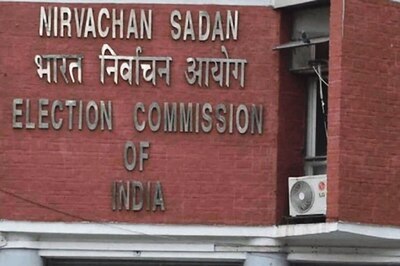
views
Parliament is the temple of democracy and parliamentary procedures the rites by which the will of the people is translated into practice. But the terms and jargon involved in Lok Sabha and Rajya Sabha processes can be difficult to grasp. The News18 series, House Talk, brings you a ready reckoner to make sure that none of it is Greek to you.
Among the amended bills listed for the monsoon session of Parliament is the Geographical Indications of Goods (Registration and Protection) (Amendment) Bill, 2022.
The Geographical Indications of Goods (Registration and Protection) Act, 1999, was amended to simplify some procedures so as to make it more accessible.
News18 answers all questions related to GI tag and how the amendment will help:
- What is a GI tag?A geographical indication (GI) tag is used for an agricultural, natural or a manufactured product (handicraft and industrial goods) originating from a definite geographical territory. A product’s quality, reputation or other characteristics can be determined based on where it comes from. E.g.: Darjeeling tea from West Bengal, Maharashtra’s Solapur Chaddar, among others.
- Who issues it?GI tags are issued as per the Geographical Indications of Goods (Registration and Protection) Act, 1999. This tag is issued by the Geographical Indication Registry under the Department of Industry Promotion and Internal Trade, Ministry of Commerce and Industry.
- How does it benefit a product?Once a product becomes GI tagged, it becomes illegal for someone outside the region to make and sell a similar product under that name. It means that those registered as authorised users are residing in that geographical territory and are allowed to use the popular product name.
- How long are GI tags valid?A GI tag is valid for 10 years after which it can be renewed. It takes between 1 and 3 years to grant a tag.
- Who can get it?An association of makers or growers of the product. It can also be given to an arm of the state or central government which may apply on the maker’s behalf.
- Can foreign products be GI-tagged?At least 15 products registered in India have their origin outside the country. For instance, Irish whiskey, Italian cheese grana padano, etc.
- How does it help commercially?India has no specific data on this. However, a study conducted in the EU found that GI products, on an average, command a premium of 2.2 times the price of non-GI products.
- What are the likely amendments?The Ministry of Commerce and Industry (Department for Promotion of Industry and Internal Trade) had in August 2020 amended the Geographical Indications of Goods (Registration and Protection) Rules, 2002. These rules were called the Geographical Indications of Goods (Registration and Protection) (Amendment) Rules, 2020.The rules allowed only proposed authorised user to file the application.For the registration of an authorised user entry in the register, where an opposition is filed and dismissed, the registrar can enter the authorised user in Part B of the register and issue a registration certificate with the seal of the Geographical Indication Registry. The position before the amendment was that the Registrar had to wait till the end of the appeal period after the opposition was dismissed.Rule 59(3) was amended as a result of which the unmounted representation of geographical indication was not required at the time of registration.Also, the new rules ensured no fees were required for registration of an authorised user of a registered GI.The amendment to the bill will likely make the process of registration easier. It may also expedite the process of issuance.
Read all the Latest News, Breaking News, watch Top Videos and Live TV here.



















Comments
0 comment